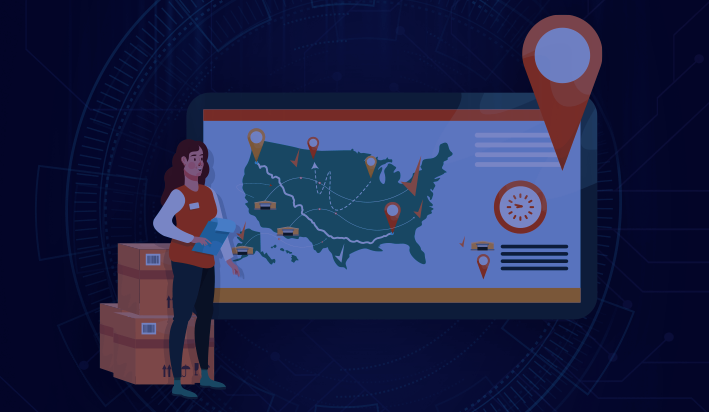These days, getting that package to your doorstep lightning-fast has become the gold standard KPI of digital commerce. Customers expect nothing less than a seamless, intact, and rapid-fire delivery experience, no matter where they are shopping and what brands they engage with. And guess what? The ultimate triumph in making this happen is last-mile delivery.
Did you know that a significant part of the total shipping cost is attributed to the final leg of the journey? It might seem surprising at first, but it’s logical when you consider that this phase significantly impacts customer satisfaction. Master this aspect, and you’re instantly in your customer’s good books.
For businesses, it is about more than just getting the goods from point A to point B. It is about cracking that last mile to give customers the experience that keeps them returning for more. In this blog article, we’ll explore the concept of last-mile delivery and delve into various optimization solutions available as of 2024.
Understanding Last-Mile Delivery
Last-mile delivery is a crucial stage in the delivery process, where a package is transported from the nearest distribution center or transportation hub to the customer’s doorstep. Think of it as the journey’s final stretch, bringing the package to the customer’s location.
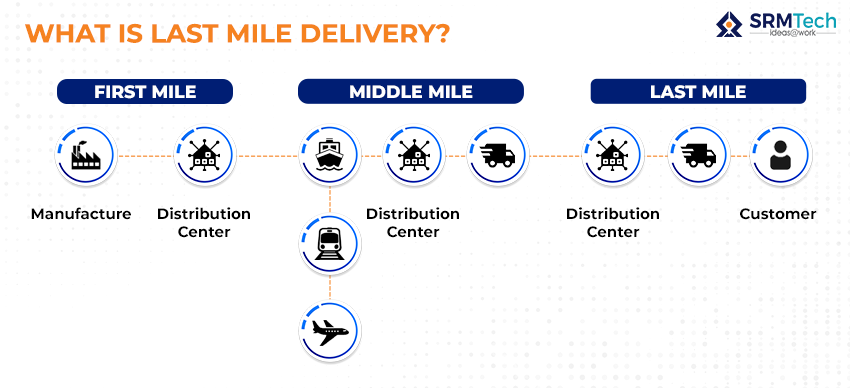
Imagine a customer has ordered a new pair of headphones online. The journey of those headphones entails various steps, including transportation from the warehouse to a local hub and then to the nearest delivery station. Finally, a dedicated delivery person ensures the headphones reach the customer’s doorstep without hassle. This last-mile delivery is the key moment when the package is delivered straight to the customer, providing a satisfactory and timely delivery experience.
How much does Last-mile Delivery cost?
Managing costs is a primary concern for businesses, especially in last-mile delivery, where expenses fluctuate based on numerous factors. The distance between the distribution center and the customer, package weight and size, transportation mode, and weather conditions contribute to the overall cost. Additionally, expenses related to labor, fuel, and necessary additional services further impact the final price. Considering these factors comprehensively is crucial when evaluating the total cost of last-mile delivery. Moreover, efficient vehicle capacity planning is vital for optimizing resources and minimizing costs, ensuring deliveries remain cost-effective and profitable despite varying weather conditions.
Always remember that balancing costs is crucial to business operations while ensuring efficient last-mile delivery. By carefully contemplating these various factors, organizations must aim to provide a transparent and cost-effective delivery solution that meets both your business needs and your customers’ expectations.
Last-mile Delivery Process
Let us use the example of an online electronics retailer to illustrate each step of the last-mile delivery process.
Order Confirmation:
Consider a customer who orders a new laptop from an online electronics store.
The order management and warehouse systems work in tandem here. The system checks the inventory availability at the last mile (nearest) distribution center to ensure that the laptop is in stock and can be delivered within the expected timeframe. If it is unavailable in the closest distribution centre, the system checks in other distribution centres in its network. The customer may be notified of potential delays or alternate options if the desired laptop is unavailable at any distribution center. This is the initial stage of the order fulfillment process.
Distribution Center Processing:
The laptop is retrieved from the inventory at the distribution center and securely packaged with protective materials to prevent damage during transit. Now, necessary shipping labels with the customer’s address and tracking information are attached to the package and handed over to the carrier partner. This process is typically automated to ensure efficiency and accuracy.
Delivery and Customer Interaction:
The delivery partner finds the most efficient path to the customer’s location using navigation tools such as GPS and last-mile delivery route optimization software. Throughout the journey, real-time updates are provided to both the electronics store and the customer, allowing them to track the progress of the delivery.
Upon arrival at the customer’s address, the delivery driver verifies the recipient’s identity to ensure the package is handed to the right person. The laptop is delivered directly to the customer’s doorstep or preferred location.
To provide proof of receipt, the customer may be asked to provide a digital signature on the delivery driver’s device or sign a physical delivery receipt. After receiving the laptop, the customer can provide feedback on the delivery experience. If the customer encounters any issues or has questions about the product or delivery, they can contact the electronics store’s customer support for assistance.
Following this structured last-mile delivery process, the electronics retailer can ensure that the customer receives their laptop promptly and in good condition, enhancing overall satisfaction and fostering customer loyalty.
Benefits of Last-Mile Delivery in Customer Satisfaction and Retention
Last-mile delivery is known to provide greater leverage for brands to excel in buyer fulfillment and keep them returning for more.
As the market shifts and more customers opt for omnichannel commerce, businesses must adapt and meet those changing demands. Speed is the most essential criterion – more than half of US customers prefer the same-day delivery option. It has become the new normal, and customers expect it when they check out.
But it is not just about speed. COVID-19 brought about new delivery options like click & collect delivery.
And let’s not forget about giving our valued customers the power to schedule deliveries at their convenience. Who wouldn’t appreciate the flexibility to choose a time that fits perfectly into their busy day? It’s all about making their lives easier and letting them take control of when their orders arrive, whether first thing in the morning or after a long day’s hustle. Offering this kind of freedom? It’s not just good business; it’s showing we truly care about their experience and satisfaction, keeping them happy and eager to return for more.
And here’s another interesting part: A whopping 95% of customers expect one-day delivery while keeping an eye on their wallets. Speed is at the top of their mind, but consumers are ready to wait longer if it saves some cash. Finding that sweet spot between quick delivery and cost-effectiveness is absolutely crucial in keeping customers happy and coming back for more. It’s all about delivering the goods fast without hurting the customer’s packet.
The other major aspect of a customer’s wish list is visibility. They want to track their orders and know where their package is at all times. It not only helps them anticipate deliveries and prepare to receive them but also helps them feel confident that their orders are being processed and handled efficiently.
Now, managing the cost of last-mile delivery while meeting all these demands can be a challenge. But fear not!
Making last-mile delivery efficient and reliable is the secret sauce. Because, at the end of the day, an excellent last-mile delivery experience leads to happy customers, repeat business, and brand success.
So, make sure you invest in the right last-mile delivery solutions to improve your last-mile delivery game.
Challenges of Last-Mile Delivery
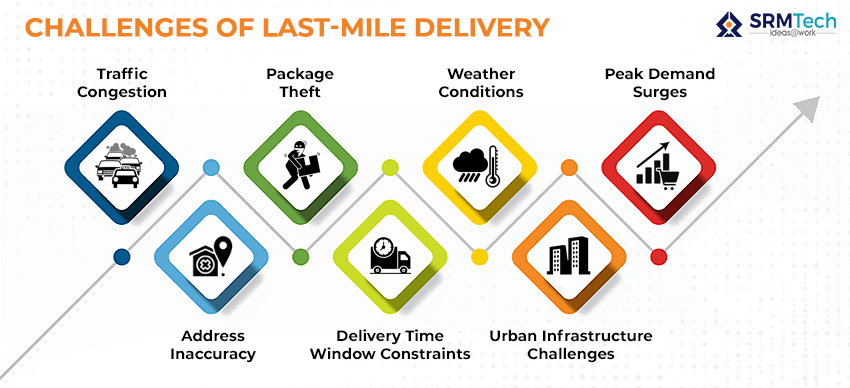
Despite these difficulties, businesses can improve last-mile delivery by carefully planning and implementing innovative last-mile delivery optimization solutions and guaranteeing timely and cost-effective deliveries, which we will discuss in the section below.
Strategies for Last-Mile Delivery Optimization
We’ve touted last-mile delivery optimization solutions as the cure-all for logistical obstacles. But what exactly is it that promises such transformation?
Here are some last-mile delivery optimization solutions for your business.
Approaches to Achieving Operational Efficiency
Invest in Last-Mile Delivery Route Optimization Software
Investing in Last-Mile Delivery Route Optimization Software is crucial for businesses to streamline deliveries, as these solutions offer customizable route planning, efficient delivery tracking, and robust communication tools. By leveraging last-mile delivery analytics, businesses can optimize routes, allocate resources effectively, and enhance customer satisfaction. Moreover, companies can maximize efficiency, scalability, and overall delivery performance with automated tasks and data-driven insights. Thus, investing in last-mile route optimization software ensures smoother operations, increased customer trust, and sustainable growth in the competitive business.
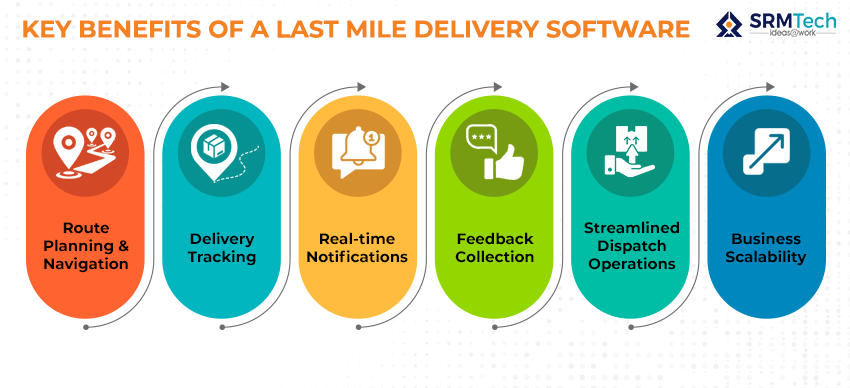
Incorporate Commercial GPS Tracker and Telematics System
Commercial GPS trackers are a game-changer for businesses looking to optimize their last-mile delivery operations management and visibility. These innovative devices provide real-time tracking and monitoring capabilities, allowing them to manage their fleets and ensure timely deliveries efficiently.
Also, the vehicles integrated with telematics technology modernize last-mile delivery by offering real-time vehicle tracking, route optimization, and driver behavior monitoring, ensuring efficiency and safety. These technological advancements were once optional but have become the backbone of smooth operations now. With GPS and telematics, businesses can make smarter decisions, trim delivery times, and reduce fuel use, leading to optimized logistic operations and enhanced customer satisfaction.
Smart/Digital Lockers
Smart lockers modernize last-mile delivery by providing consumers with convenient, self-service parcel pickup and drop-off options. They have automated storage units usually located in public areas like shopping centers, apartment complexes, or transit stations and equipped with technology such as touchscreens and barcode scanners. With around-the-clock accessibility and user-friendly interfaces, they offer the end customers convenience and peace of mind. These lockers optimize operational efficiency by reducing delivery attempts and costs associated with missed deliveries, ultimately enhancing overall logistics performance and buyer fulfillment.
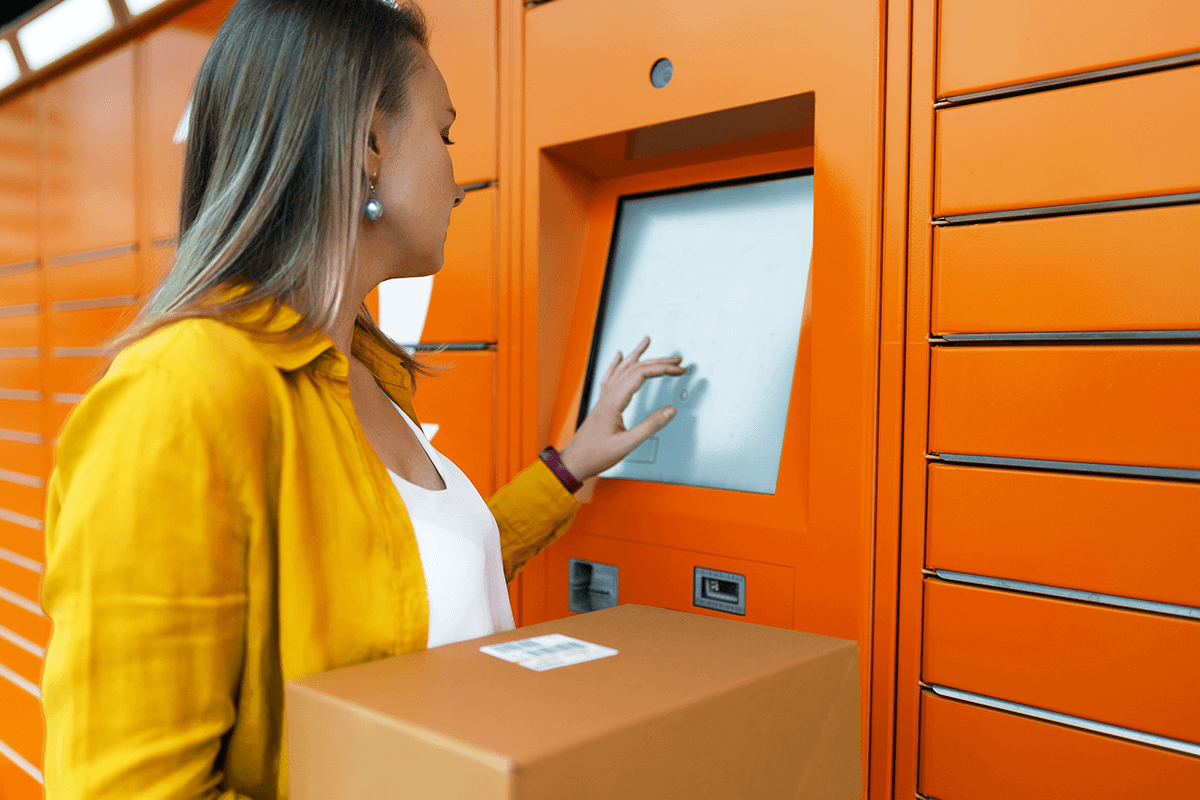
Let’s take Amazon Locker as an example. Customers ordering online can opt to have their package delivered to the nearest locker location at a convenience store or shopping center. Upon arrival, they receive a unique pickup code, allowing them to collect their package hassle-free whenever convenient. It’s a win-win: customers get their package hassle-free, and Amazon saves on delivery costs.
Pick-up Points
Pick-up points are designated delivery outlets, often partnered with retailers or logistics companies, where customers can retrieve their packages. These points may include convenience stores, post offices, or dedicated pick-up locations. Customers typically choose from these pick-up points during checkout as their preferred delivery option. Packages are held at the pick-up point for a specified period, and customers can collect them at their convenience during the operating hours of the pick-up location.
Employ Delivery Drones and Autonomous Vehicles
Delivery drones and autonomous vehicles represent the future of last-mile delivery optimization. These innovative technologies are reshaping how goods are transported by providing faster, more efficient, cost-effective last-mile delivery solutions.
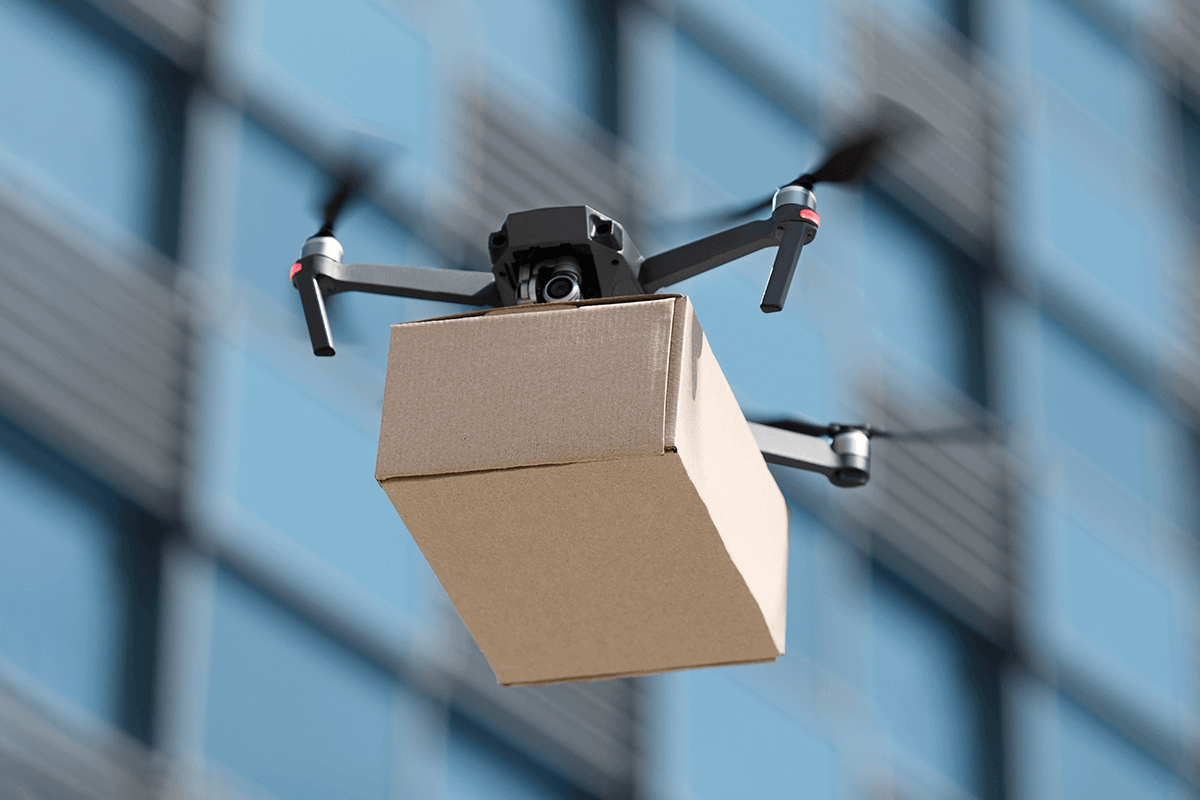
For example, Amazon’s Prime Air drone delivery solution uses autonomous drones to deliver packages weighing up to 5 pounds in under 30 minutes. This real-time example demonstrates how companies leverage cutting-edge technology to streamline the delivery process and meet customer demands for speed and convenience. By incorporating delivery drones and autonomous vehicles into their operations, businesses can significantly improve efficiency, accuracy, and sustainability in the last mile of their supply chain.
Approaches For Process Optimization
Implement Crowdsourced Delivery
Crowdsourcing is a growing last-mile delivery practice, offering a cost-effective solution for businesses to enrich delivery reach and performance without owning a fleet. Leveraging independent contractors, companies can assemble local delivery teams based on location, availability, and cost, thereby optimizing last-mile delivery. This approach reduces capital requirements and enhances logistics metrics, ultimately improving last-mile delivery optimization. With platforms like Amazon Flex leading the charge, crowdsourced last-mile delivery is evolving rapidly, promising convenience and reliability for businesses and customers alike.
Employ Warehouse Automation Process
Automation technology has recently optimized warehouse processes for last-mile delivery. Picture this – conveyor belts and sorting machines working autonomously to streamline operations and reduce the reliance on manual labor. It’s like having a team of highly efficient robots!
For businesses operating large-scale logistics, investing in automated systems at your fulfillment center could be a game-changer. These systems are designed to categorize packages by delivery route, making the loading process for delivery vehicles a breeze. No more guessing or searching for suitable packages – everything is assigned to the correct route in minutes.
Take a look at Flipkart, a major e-commerce company which has deployed automation practices in their warehouses. They use robots to do tasks like picking and sorting items, needing fewer people to do the manual labor and leading to faster and more accurate delivery orders. Talk about a win-win situation!
Continuous Training and Development
Finally, investing in ongoing training and development programs for delivery personnel is essential for optimizing last-mile operations. This includes equipping drivers with the latest technology tools, improving communication skills, and enhancing problem-solving abilities to handle diverse delivery scenarios effectively. Businesses can ensure smoother and more reliable last-mile deliveries by empowering employees with the necessary skills and knowledge.
Leverage Potential & Advanced Technologies
Advanced technologies such as AI/ML, blockchain, and IoT analytics are reshaping the last-mile delivery optimization process. Let’s take a real-time example to illustrate this concept:
Consider an e-commerce company that leverages advanced AI and machine learning algorithms to delve into historical data and conduct predictive analytics – analyzing past trends and anticipating future demand fluctuations to optimize its last-mile delivery operations. This entails dynamically adjusting routes and schedules to accommodate peak demand periods, ensuring timely delivery even during heightened activity. Through this proactive approach, the company enhances operational efficiency and retains loyal customers by consistently meeting their delivery expectations, thereby strengthening trust and satisfaction within its customer base.
Artificial intelligence and machine learning provide:
- Highly sophisticated and optimized delivery network.
- Enabling drivers to spend less time on the road.
- Reducing costs and unplanned holdups.
Furthermore, by integrating blockchain technology into its supply chain network, businesses can enhance transparency in tracking shipments from the warehouse to the customer’s doorstep. This ensures all stakeholders can access accurate and tamper-proof information throughout the delivery process.
Additionally, IoT-based last-mile delivery analytics is also crucial in monitoring fleet performance and driver behavior. By equipping delivery vehicles with IoT sensors, companies can gather real-time data on fuel consumption, vehicle maintenance needs, and route efficiency. This information enables them to make informed decisions that improve operational efficiency and reduce costs.
Development of Last-Mile Distribution Centers
Last Mile Distribution Centres play a crucial role in last-mile delivery optimization by strategically locating facilities closer to end customers, reducing delivery times and costs. For example, a commercial electronics retailer setting up last-mile distribution centers in critical urban areas can ensure quicker delivery of the products to their target customers in those regions. By storing inventory closer to customers’ locations, the retailer can fulfill orders faster and more efficiently, improving consumer happiness and increasing operational effectiveness in the last-mile delivery process.
With 4,700 Walmart stores within 10 miles of 90% of the U.S. population, Walmart leverages its brick-and-mortar locations as last-mile distribution centers to optimize last-mile delivery. Utilizing its extensive retail network, Walmart stores inventory closer to customers, reducing delivery times and costs. This strategic positioning allows Walmart to provide faster and more efficient delivery services, enhancing buyer fulfillment and maximizing the effectiveness of its last-mile delivery process.
Microfulfiment Center
Micro-fulfillment centers (MFCs) are compact warehouse facilities strategically located in urban or high-demand areas to facilitate efficient last-mile delivery operations. Unlike traditional distribution centers, MFCs are designed to handle smaller volumes of orders and process them quickly for rapid delivery to customers in densely populated areas, facilitating last-mile delivery.
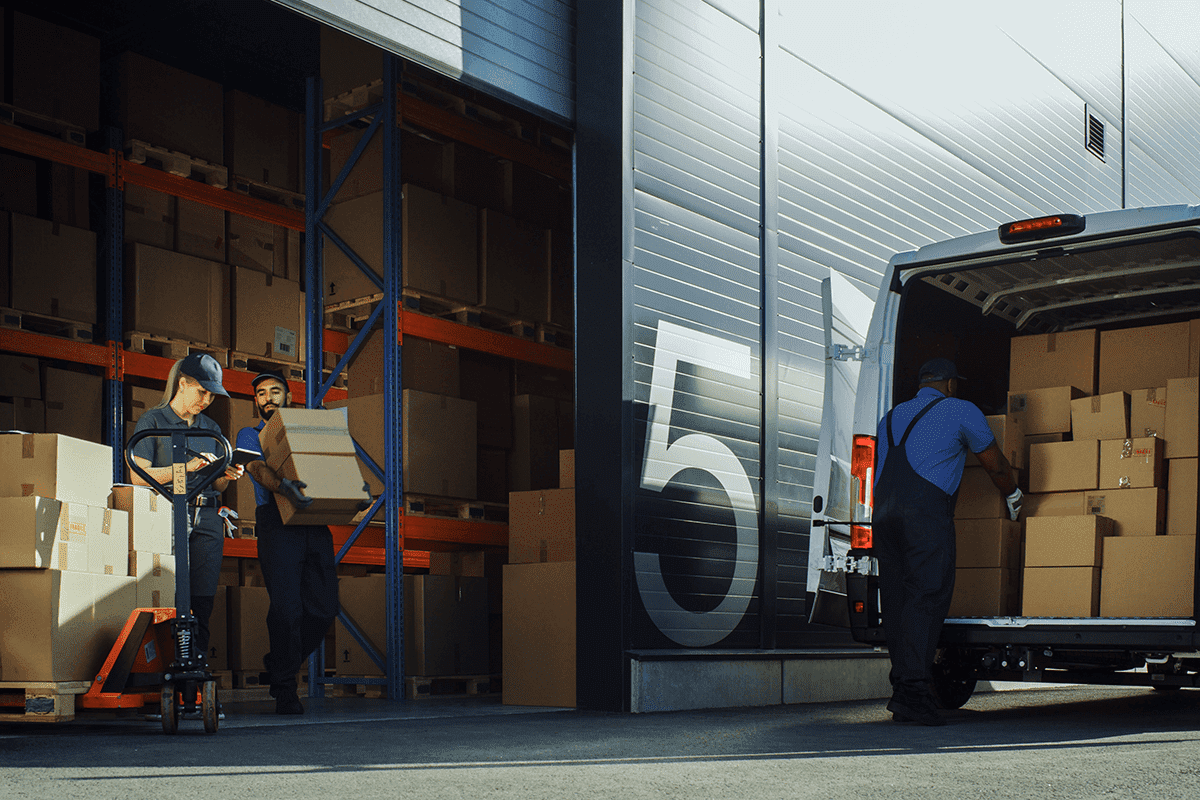
These centers leverage automation and robotics to streamline order picking, packing, and sorting processes within a confined space. By employing advanced technologies like AI/ML algorithms and robotic systems, MFCs can optimize inventory management, minimize fulfillment times, and reduce labor costs.
Reverse Logistics
Now that we’ve explored the final stretch of delivery from distribution center to customer, let’s delve into the journey from customer back to the warehouse—also known as reverse logistics.
Reverse logistics plays a pivotal role in the last-mile pickup process by ensuring efficient management of products returned by customers and bringing them back to the warehouse or fulfillment center. It serves as an extended service line, demonstrating a brand’s commitment to customer satisfaction and fostering loyalty.
Efficient handling of returns and minimizing associated costs, such as restocking, repacking, refurbishment, and disposal, is crucial for businesses to mitigate losses and maintain profitability. Through regular analysis of reverse logistics data, businesses can identify trends, root causes of returns, and areas for improvement. Leveraging customer feedback also enables companies to refine product offerings, packaging, and customer service, ultimately minimizing returns and enhancing overall satisfaction.
Key Tip for Businesses Embracing Last-Mile Delivery Optimization
The significance of sustainable deliveries has now escalated to the status of a responsible business characteristic compared to just a few years ago. So, by incorporating eco-friendly initiatives like utilizing e-vehicles and adopting recyclable packaging, companies can reduce their carbon footprint and minimize environmental impact. This practice not only resonates with environmentally conscious consumers but also cultivates a positive brand image.
Furthermore, sustainable deliveries drive operational efficiency by optimizing route planning and reducing fuel consumption by grouping deliveries according to location. Beyond the immediate benefits like lowering costs, enhancing the overall supply chain performance, and prioritizing sustainability in last-mile delivery, it contributes to long-term business success by demonstrating corporate responsibility and building customer loyalty and trust.
However, selecting the perfect last-mile delivery solution demands a meticulous approach. Businesses can start by listing their objectives and required functionalities and identifying budget constraints to find the ideal fit. During this process, evaluating one’s existing setup and analyzing what could be done more to optimize the delivery KPIs is essential.
The key to success lies in focusing on value and functionality to experience the epitome of seamless logistics digitalization in 2024. That’s where SRM Tech steps in with our comprehensive end-to-end supply chain digital solutions. Trust us to cater to all your logistic modernization needs, as our proven domain expertise and tailor-made solutions can boost customer satisfaction and drive business success by achieving efficient and dependable logistical platforms.
Ready to revolutionize your last-mile delivery experience like never before? Connect with us today and witness how our state-of-the-art supply chain management solutions can transform your operations.


